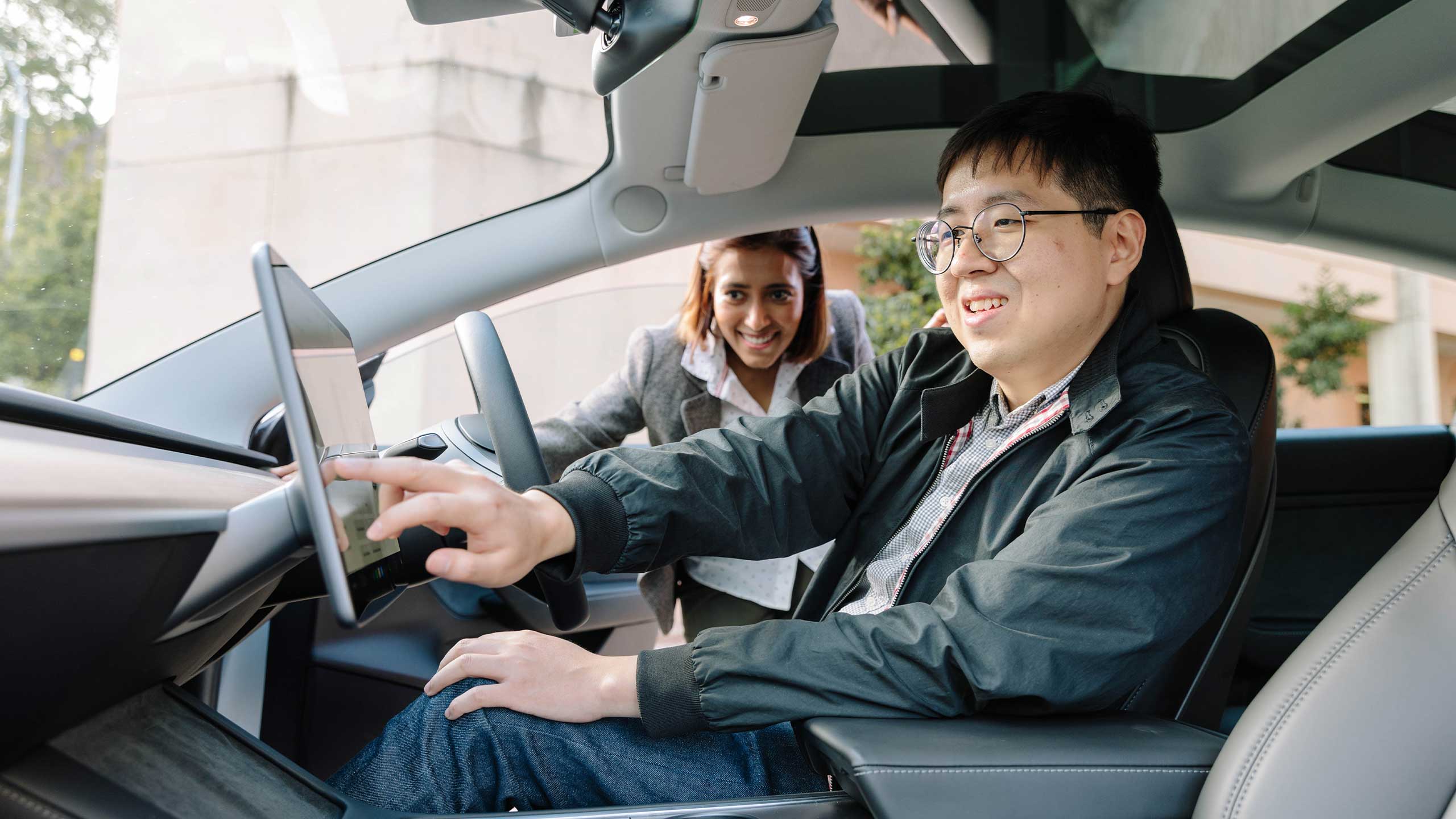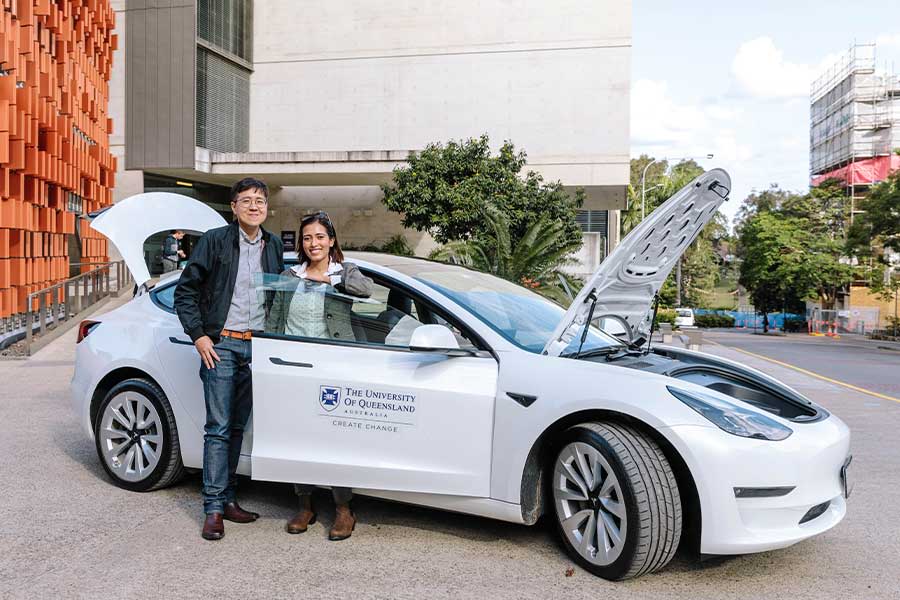Jolt needed to drive electric-vehicle uptake
Opinion

By Dr Kai Li Lim
St Baker Fellow in Electromobility
UQ Dow Centre for Sustainable Engineering Innovation
The recently announced mandate of phasing out fossil fuel vehicle sales in the ACT by 2035 is certainly a welcome decision. It is pleasing to see that Australia is committing to emission reductions and, with the transport sector being the second largest contributor to greenhouse gas emissions, its decarbonisation will bring substantial benefits to this country, including helping us to realise our emission targets.
The ACT is once again leading vehicle decarbonising policies, and it is hoped that other states and territories – like Queensland – will follow its lead.
The ACT mandate on phasing out fossil fuel vehicle sales by 2035 is in line with mandates from other Organization for Economic Co-operation and Development (OECD) countries, including the United States, Canada, South Korea and Japan. This is five years earlier than the commitments set by the Glasgow Declaration.
I believe this has been well considered, as the automotive manufacturing industry has already responded or committed to increasing zero-emission vehicle (ZEV) productions to meet these targets, as well as phasing out fossil fuel vehicle productions. This was led by Volvo in 2017 and has expanded to many other manufacturers globally.
The ACT has continuously led Australia in implementing policies to decarbonise transport and I hope that this will be followed by other states and territories, as well as the Federal Government, as previously demonstrated through their tax and rebate incentives for electric vehicles (EVs). This was previously shown with the ACT leading on EV rebates and stamp duty concessions as well.
With new climate mandates at the federal level, it is highly possible that other states and territories will follow suit. The recent announcement by the Climate Change and Energy Minister regarding a national adaptation of a fuel efficiency standard should encourage EV uptake, and also accelerate the electrification of government and industry fleets.
An increase in EV population from fleet operators will benefit the second-hand market, especially during a fleet refresh, thereby increasing uptake among private owners.

Reducing the barriers to EVs
Many urban Australians have stated that they are one car away from purchasing an EV. And passenger EV uptakes in Australia, while slow, have also been quite promising. This is evident with more and more manufacturers committing to import EV models to the country, as EV uptakes are doubling every year.
The main barrier to EV uptake is cost, however the price of EVs are gradually decreasing due to two main factors: government incentives and reduction in manufacturing costs.
Government incentives
State and territory governments have incentives and rebates in place for purchasing passenger EVs, which are given through a combination of subsidies and duty exemptions. Even if many of us are hoping that these incentives be more generous and comparable with those offered in Nordic countries, there is no doubt that these policies have had a positive effect on EV uptakes around the country.
Additionally, the Federal Government is also expected to announce EV incentives later this year, which should further spur uptake.
Reduction in EV manufacturing costs
The cost of manufacturing of EVs has reduced over the past decade. While there have been optimisations in the manufacturing process, the greatest contributor to this cost reduction is the decline in battery prices, as the battery is the most expensive aspect of an EV.
As a result, the cost of raw materials to manufacture lithium batteries would dictate the resulting cost of EVs. The parity price for batteries is often considered to be US$100/kWh, which was achieved last year.
However, manufacturing slowdowns due to the COVID-19 pandemic have delayed further EV price reductions. In this regard, we would be seeing cheaper EVs being manufactured in the near future.

How UQ is helping to make EVs more accessible
The UQ E-Mobility Team comprises Dr Dia Adhikari Smith, Dr Sohrab Nizami and myself. The Team is supported by the Tritium and the St Baker Energy Innovation Fund, and works closely with UQ’s School of Civil Engineering and School of Information Technology and Electrical Engineering.
Together, the E-Mobility Team conducts research, advocacies, strategies, and frameworks to target various areas across the e-mobility sector. This includes micro-mobility, road vehicles (passenger and freight), heavy machinery, marine vessels and aviation. Applications include behavioural analysis, smart-charging programs, feasibility studies and smart-grid integrations.
The E-Mobility Team works on collaborative industrial and government projects that lead to more sustainable transportation, which helps Australia meet its Net Zero target by 2050.
The continuing expansion of connected and e-mobility products and services has led to their ability to rapidly generate vast amounts of data, leading to a demand for effective data-management solutions. This expansion is further catalysed through the need for society to make informed policies and decisions that can adequately support their emerging growth.

Dr Kai Li Lim and Dr Dia Adhikari Smith.
Dr Kai Li Lim and Dr Dia Adhikari Smith.
What I'm currently working on
A major project I am working on aims to offer a pragmatic solution to vehicular data interoperability by proposing a consolidated vehicular data platform.
Data platforms are cornerstones to a connected vehicle system, forming an integral part of the Internet of Vehicles. Data from vehicles transmit to the platform, whereby they are processed, managed, and structurally stored. Stored data can be further processed for monitoring, visualisation, machine learning and analytics. As such, platforms that contain large datasets from various sources would result in better reporting and decision quality. While data systems and platforms exist, they are often proprietary, being only compatible with the products that they are designed for. Given these products and services generate energy and spatial-temporal data that can often correlate, a lack of interoperability between these systems is impeding decision making, as data from each system must be considered independently.
Proprietary data platforms are creating massive data silos with potentially interoperable data. While this allows manufacturers to exert more control over their data, it impedes holistic decisions that are necessary from other stakeholders, including policymakers and consumers.
This need for quality and holistic decision-making is crucial in the current Australian e-mobility context, affecting governments, consumers, and operators alike. These decisions should be made using local data, given the uniqueness of the Australian geography, economy, and commuting behaviours.
While many of our e-mobility policy proposals have been adapted or replicated following more successful markets and jurisdictions, it is necessary for us to adapt them for the Australian market using local insights. This platform would be indispensable in formulating roadmaps and proposals to inform stakeholders using local information.
About the author
Dr Kai Li Lim is the inaugural St Baker Fellow in Electromobility at the UQ Dow Centre for Sustainable Engineering Innovation. As a trained computer engineer, he employ techniques relating to data engineering, the Internet of Things, cloud computing, computer vision and deep learning, resulting in tangible products for real-time vehicle and infrastructural telematics, as well as computer vision-based autonomous driving. Before joining UQ, Dr Lim oversaw The University of Western Australia’s Renewable Energy Vehicle (REV) Project EV charging station network, the first EV charging network in Australia.


